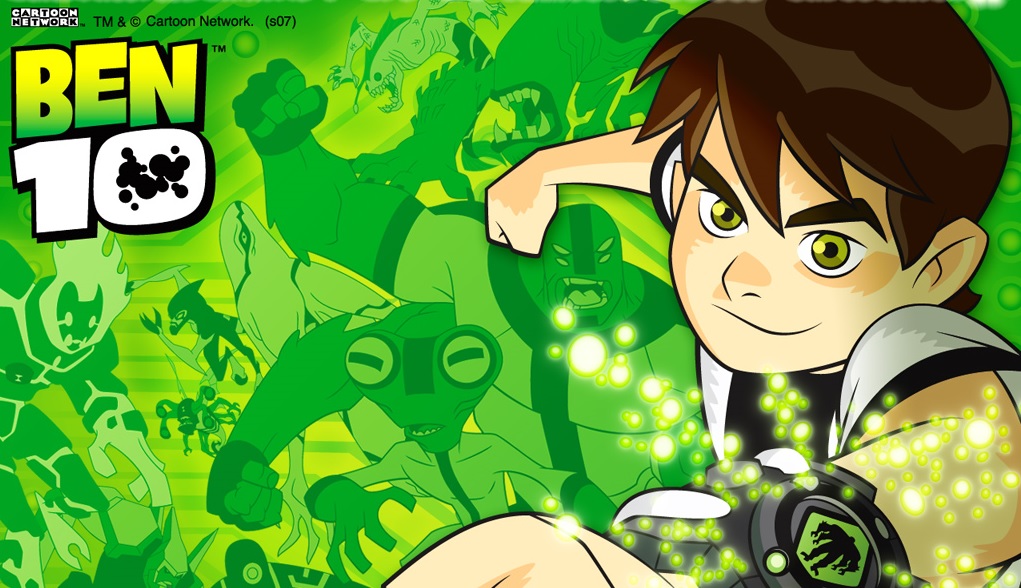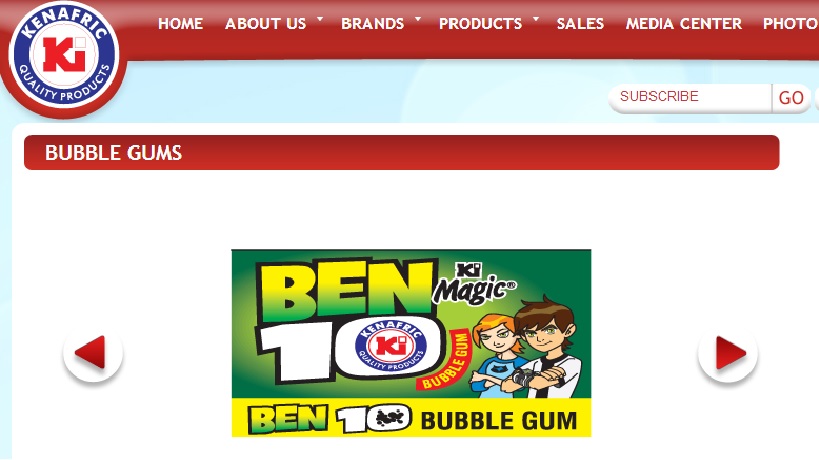
The Business Daily reports that Cartoon Network, a Time Warner Company has moved to the High Court to stop local confectionery giant Kenafric from using its cartoon BEN 10 on the wrappers of its bubble gum products. According to the report:
“Cartoon Network alleges that the association of the chewing gum with its brands can damage the reputation of BEN 10 and goods branded with the label toys, video games and clothing valued at Sh275 billion (….) “The defendant’s (Kenafric) use of the name BEN 10 amounts to trade mark infringement of BEN 10 Trademarks,” says Cartoon Network’s Vice President Louise Sams in documents filed at the Milimani Commercial Court(….) “The unauthorised reproduction or adaptation or publication or broadcast or sale or distribution or possession or importation of the offending chewing gum constitutes copyright infringement.”
Below is a screenshot from the Kenafric website here which clearly shows the BEN 1O cartoon character and brand appearing on one of Kenafric’s bubblegum products.

According to CartoonNetworkAfrica.com:
“Ben Tennyson is just like any other normal 10 year old boy, but the watch that he found in the woods soon turns out to be no ordinary wrist watch! It’s the Omnitrix – an amazing device that transforms Ben into different species of alien whenever he needs to fight off the evil aliens and clamp down on crime! In all there are 10 different aliens that Ben can be transformed into, thanks to the extraordinary Omnitrix wrist watch (….) The only place to find Ben 10 is on Cartoon Network!”
Comment:
From the BEN 10 poster above, one clearly sees that the following words and symbols on the top left-hand corner: “TM & (C) Cartoon Network” and a second “TM” symbol on the BEN 10 word mark.
Therefore there is a prima facie presumption of ownership of trade marks and copyright by Cartoon Network.
With regard to the trade mark BEN 10, section 5 of the Trademarks Act provides that Cartoon Network would not be entitled to institute proceedings for infringement if the mark is not registered under the Act. However this Act shall not be deemed to affect rights of action against any person for passing off goods as the goods of another person or the remedies in respect thereof.
In addition, section 15A was introduced as an amendment to the Act to allow for registration and protection of well known marks in Kenya. The section (15A) stipulates that well known marks shall be protected in Kenya with or without registration. This section prohibits the unauthorised use of unregistered trade marks which are well known in Kenya as being the marks of persons who are nationals of, domiciled in or have commercial establishments in convention countries whether or not such person carries on business, or has any goodwill, in Kenya.
Therefore Cartoon Network is entitled to restrain the use of a mark which constitutes a reproduction, imitation or translation of the well-known foreign trade mark in relation to goods or services which are the same as or similar to those for which the trade mark is well known, if such use is likely to cause deception or confusion. In determining whether a trade mark is well known in Kenya, due regard must be given to knowledge of the trade mark in the relevant sector of the public including knowledge which has been obtained as a result of the promotion of the trade mark.
The leading case on well known marks is from South Africa (McDonald’s Corporation (Pty) Ltd v Joburgers Drive-Inn Restaurant (Pty) Ltd; McDonald’s Corporation (Pty) Ltd v Dax Prop CC; McDonald’s Corporations (Pty) Ltd v Drive-Inn Restaurant (Pty) Ltd & Dax Prop CC 1997 (1) SA 1 (A)). The ratio decidendi from these cases was that a mark will be regarded as well known if it has acquired a reputation in South Africa among a substantial number of the class of persons (eg potential customers) interested in the goods or services to which it relates.
With regard to copyright, there is no requirement for registration but the subject matter must meet the requirements for copyright protection, namely originality and reduction to material form. In order to prove copyright infringement, a three-pronged test may be used: (a) Similarity, (b) Causal connection between original work and infringing copy; (c) Copyrightability of infringed work. In the present case, requirement (c) has already been established. As for similarity, it is assessed objectively by comparing Kenafric’s wrapper and Cartoon Network’s cartoon. The question of causal connection is established by determining whether Kenafric had access to Cartoon Network’s cartoon in order to explain the similarity between the two works.
@NyaKabs @mmnjug @nTunoi @IPKenya @wa_mutegi @ThatAkinyi What about all those primary schools with Mickey Mouse painted on the gate? 🙂
— Isaac Rutenberg (@iruten) October 11, 2013
In light of this case, Kenyans are advised to be careful about using Cartoon Network, Disney, Anime, Manga or any other popular cartoons and related brands unless they have been authorised by the respective trademark and copyright owners.